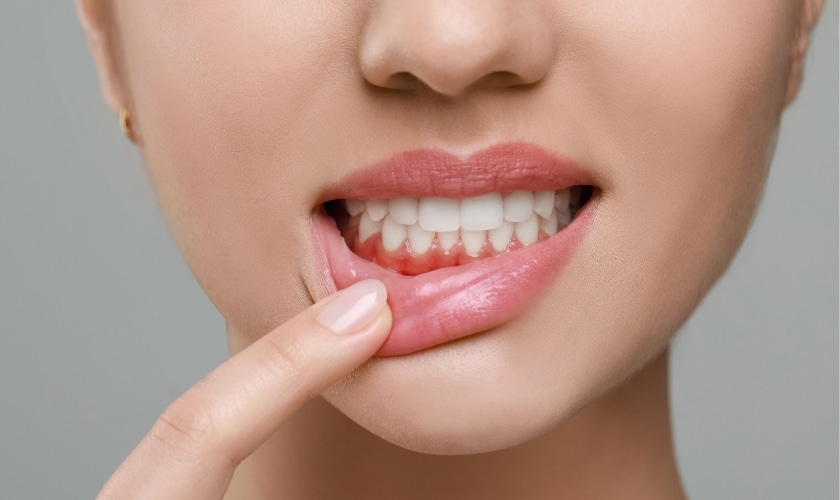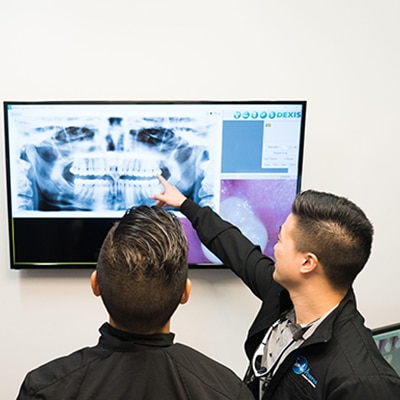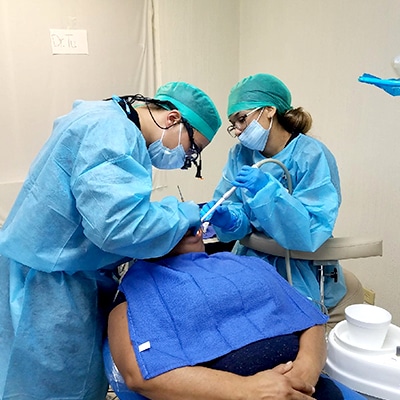
Healthy gums are the bedrock of a beautiful smile and good oral health. Periodontitis, also known as severe gum disease, is a progressive infection that attacks the tissues and bone supporting your teeth. If left untreated, it can lead to tooth loss. This article explores the most effective treatments for periodontitis, giving you the knowledge to take control of your oral health.
Understanding Periodontitis: Beyond Gingivitis
Healthy gums are essential for a beautiful smile and overall oral health. However, gum disease can develop, starting with gingivitis.
- Gingivitis: This is the early stage, marked by swollen, red, and bleeding gums. The good news is, that with good oral hygiene, gingivitis is reversible.
- Periodontitis: If left untreated, gingivitis can progress to periodontitis. This more serious gum infection spreads deeper, attacking the ligaments and bones that hold your teeth in place. This creates pockets around the teeth, which trap bacteria and can become infected.
Symptoms of Periodontitis
- Bleeding gums, even with gentle brushing: This can be a sign of irritated or inflamed gums.
- Loose teeth: This can indicate weakening bone support due to gum disease.
- Receding gums, making teeth appear longer: This happens as gum tissue shrinks away from the teeth.
- Deep pockets between teeth and gums: Healthy gums fit snugly around teeth. Deep pockets can harbor bacteria.
- Pus between teeth and gums: This is a sign of infection.
- Persistent bad breath (halitosis): This can be caused by bacteria buildup associated with gum disease.
How Dentists Diagnose Periodontitis
To diagnose and assess the severity of periodontitis, your dentist might take a multi-step approach:
- Medical History Review: Your dentist will discuss your medical history to identify any factors that could be contributing to your symptoms. This might include conditions like diabetes or medications that cause dry mouth, as these can increase your risk of gum disease.
- Oral Examination: A thorough examination of your mouth is essential. Your dentist will look for plaque and tartar buildup, any signs of inflammation, and bleeding gums, even with gentle brushing.
- Gum Pocket Measurement: A dental probe, a small ruler-like instrument, is used to measure the space (pocket) between your gums and teeth. Healthy gums have pockets between 1 and 3 millimeters deep. Pockets deeper than 4 millimeters might indicate periodontitis. Pockets deeper than 5 millimeters are difficult to clean with regular brushing and flossing and likely require professional intervention.
- Dental X-rays: X-rays provide valuable insights into what’s happening beneath the gum line. They help your dentist assess any bone loss that might be occurring around your teeth due to periodontitis.
Treatment Options for Periodontitis
Depending on the severity of your case, your periodontitis treatment team might involve a dentist, a periodontist (gum specialist), and a hygienist. The overall goal is to:
- Deep clean the spaces (pockets) around your teeth to remove harmful bacteria.
- Stop further damage to your gums and jawbone.
Maximizing Your Treatment Success:
- Daily Oral Care Routine: Proper brushing and flossing are crucial for maintaining good oral health after treatment.
- Managing Health Conditions: Discuss any health issues you have with your doctor, as they can sometimes affect your dental health and treatment success.
- Stop Tobacco Use: Tobacco use significantly increases your risk of gum disease and makes treatment more difficult. Quitting smoking or using other tobacco products greatly improves your chances of successful treatment.
Treatment Options:
Non-Surgical Treatments (Mild/Moderate Periodontitis):
- Scaling: Removes tartar and bacteria buildup above and below the gumline using instruments, lasers, or ultrasonic devices.
- Root Planing: Smooths tooth root surfaces to prevent further bacteria buildup and helps gums reattach to your teeth.
- Antibiotics: Topical or oral antibiotics can be used to control bacterial infections. Topical options include gels or mouthwashes, while oral antibiotics target specific types of bacteria.
Surgical Treatments (Advanced Periodontitis):
- Flap Surgery (Pocket Reduction Surgery): Gums are carefully folded back for deeper cleaning of tooth roots. The underlying bone may be reshaped before the gums are stitched back in place, making future cleaning easier.
- Soft Tissue Grafts: When gum tissue is damaged, healthy tissue is taken from the roof of your mouth or a donor source to reinforce the weakened area. This prevents further gum loss, covers exposed tooth roots, and enhances aesthetics.
- Bone Grafting: Bone lost to periodontitis can be replaced with bone from your own body, artificial materials, or a donor. This helps prevent tooth loss and allows the natural bone to regrow.
- Guided Tissue Regeneration: A special fabric is placed between the existing bone and your tooth. This promotes bone regrowth and prevents unwanted tissue from filling the space.
- Tissue-Stimulating Proteins: A gel containing proteins similar to those in tooth enamel is applied to stimulate the growth of healthy bone and tissue around the tooth root.
The Importance of Early Diagnosis and Treatment
Early diagnosis and treatment of periodontitis are crucial. Detecting it in its early stages allows for a less invasive and more effective treatment approach. Regular dental checkups and cleanings are vital for early detection and prevention of gum disease.
Maintaining Healthy Gums After Treatment
Following successful periodontitis treatment, meticulous oral hygiene is key to preventing the disease from coming back:
- Brushing: Brush your teeth twice a day for two minutes with a soft-bristled brush and fluoride toothpaste. Pay special attention to the gum line where plaque can build up.
- Flossing: Daily flossing removes plaque and food particles from between teeth, where brushing can’t reach.
- Regular Dental Checkups and Cleanings: Schedule regular dental visits for checkups and professional cleanings. This allows your dentist to monitor your gum health and identify any potential problems early on.
Periodontitis: A Long-Term Commitment
Periodontitis is a chronic condition that requires ongoing care. By following your dentist’s recommendations on oral hygiene and maintaining a consistent dental care routine, you can:
- Maintain good oral health: This reduces your risk of gum disease worsening.
- Prevent future problems: Regular checkups and cleanings help catch any issues early when they’re easier to treat.
Your Dental Team: Partners in Oral Health
Dentists play a vital role in effective periodontitis treatment. They can:
- Create a personalized treatment plan: This plan addresses your specific needs and aims to preserve the health and longevity of your teeth and gums.
- Provide oral hygiene guidance: Your dentist can offer tailored advice on maintaining good oral hygiene practices to minimize the risk of future problems.
A healthy smile starts with healthy gums! If you suspect you might have periodontitis, don’t hesitate to schedule an appointment with a dentist. Early diagnosis and treatment, along with a partnership with your dental professional, can help control the infection and keep your smile healthy for years to come.










